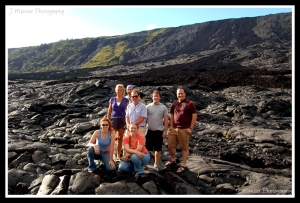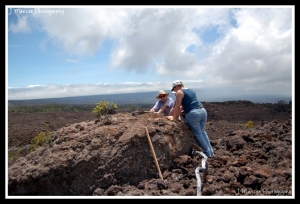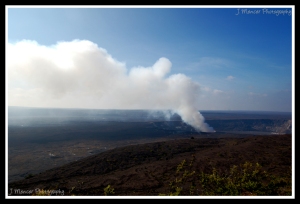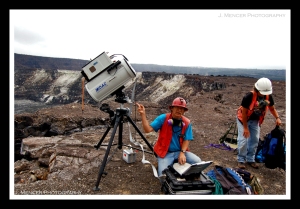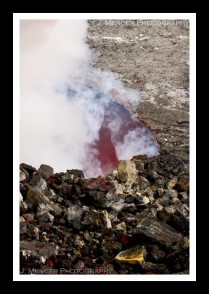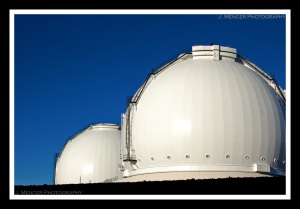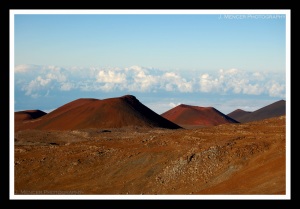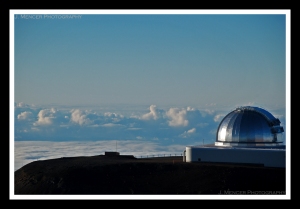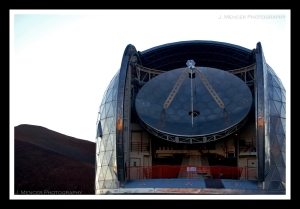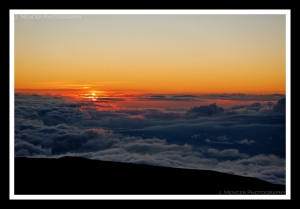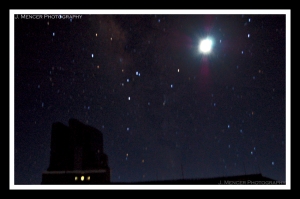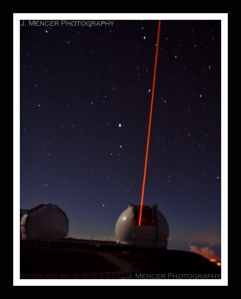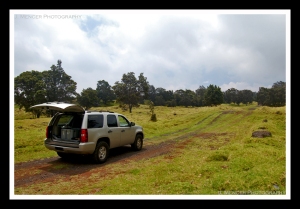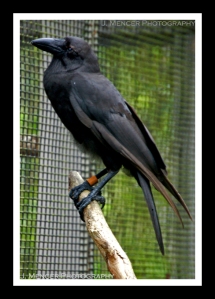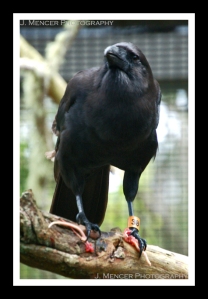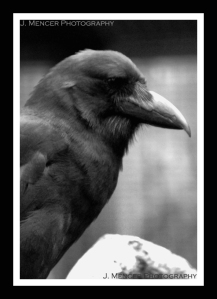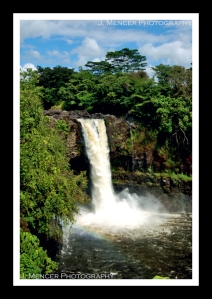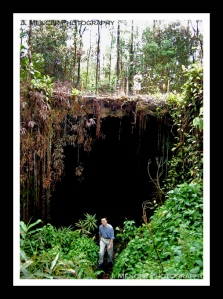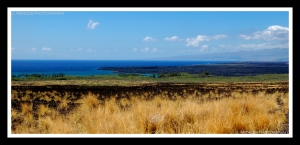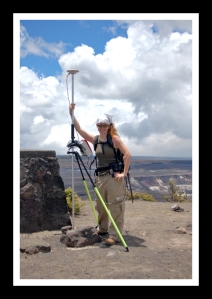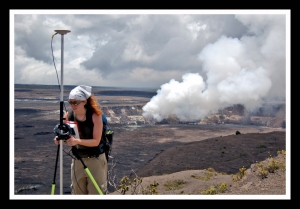Hello and welcome to the 2nd edition of VolcanoSummer – Hawai`i! This year brings a much shorter visit to the Big Island and a somewhat familiar agenda, with exciting new faces and places added for your viewing pleasure. I arrived in Hilo via Honolulu on Sunday and was promptly met by the excellent Dr. Mark Kurz of the Woods Hole Oceanographic Institute and his nephew, David Kurz. We acquired the soon-to-be Dr. Brent Goehring of the Lamont-Doherty Earth Observatory and made the familiar trek up to Volcano, Hawai`i. This is the town outside of Hawai`i Volcanoes National Park, where our research group has rented two lovely houses for the duration of our expedition. We settled in to discuss the trip and await the arrival of the remaining members of our science party, Dr. Joe Licciardi of the University of New Hampshire and Shasta Marrero and Michelle Hinz of New Mexico Tech. Check out our awesome group!
Our group was assembled to perform calibration work for the CRONUS-Earth Project using Mauna Loa lava flows. CRONUS is an international effort by geoscientists to use cosmogenic isotopes in dating many types of geologic features around the world. You may be scratching your head and wondering what the heck a cosmogenic isotope is, so I’ll give you the short version. The sun continually bombards the Earth with cosmic rays, and when some of these rays strike the ground they interact with certain elements contained in the rock. These interactions cause the elements to change into a slightly different version of themselves known as an isotope. You may be familiar with the concept of Carbon-14 dating, where scientists employ analysis of an isotope of carbon in order to date how old something is. CRONUS uses similar concepts but with rocks instead of carbon-based samples.
We are here in Hawai`i as part of an effort to determine just how accurate cosmogenic isotope dating methods can be. We are sampling lava from flows that we already know the ages of, whether through Carbon-14 dating of burned plant material (charcoal) or from historical accounts. The samples will be sent to laboratories for analysis, and we’ll be able to clearly see how accurate this dating method is. The benefit of cosmogenic isotope dating is that we are not limited as severely as we are with Carbon-14, and much older ages may be obtained. Basically, I’m hanging out with a bunch of geochemists who are into travelling the world and ascertaining the ages of various geologic features such as lava flows and landslides. It’s all in the name of science!
Ok, so that’s the detailed stuff. Let’s move on to the part you’ve all been waiting for: pictures!
In this photo Mark, Brent, and Shasta are debating the merits of sampling from this particular lava ball. They’re standing on a roughly 900 year old Mauna Loa a`a lava flow. Site selection is key to our undertaking, as anything that could shield the rocks from the cosmic rays will throw off the dating technique. Also, the surface that is selected for sampling has to be the rock’s original surface. Erosion wears rocks down, and that type of material loss would make the rock appear younger than it actually is since the sun’s rays would have bombarded the eroded surface for less time. Scientists also like to use site selection as a means to argue amongst themselves. (No scientists were harmed in the making of that joke, FYI.) In the foreground of the picture you’ll find a 6lb sledgehammer, which can be used for sample collection or warding off greedy competing scientists. In the back right of the picture you can see Kilauea’s summit plume, which repeat readers may remember from last year. The summit eruption is indeed still going, in case anyone was wondering.
Hurricane Felicia never materialized by HVO, but the typical tradewinds were affected enough to cause the plume to blow in the direction opposite its normal route. Seeing the plume is like having a giant (and intensely awesome) welcome mat rolled out in greeting. The vent has increased substantially in size since I left HVO last September, and it now spans approximately 130 meters. To put it in perspective, that’s larger than a football field. Amazing.
I’m about to fall asleep while typing, so this’ll conclude tonight’s post.
P.S. – It’s great to be back!
